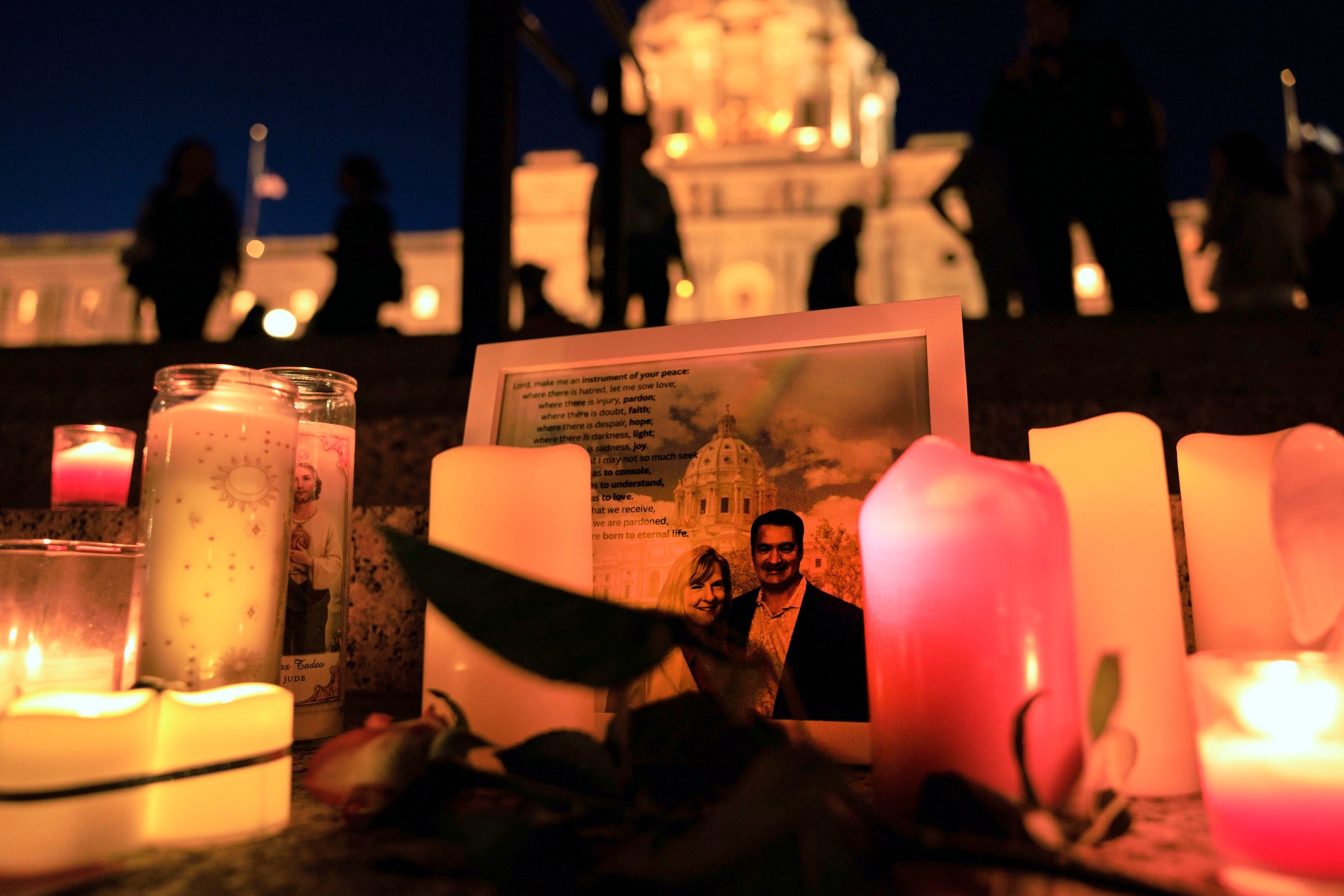It’s been 25 days since the October 1 massacre in Las Vegas, the worst mass shooting in modern U.S. history. In that time, at least 2,920 more people have been shot across America, 906 of them fatally, according to the Gun Violence Archive.
Twenty of those shootings involved four or more casualties, including an October 18 shooting at a Maryland granite fabricator that left three people dead and two others wounded, and a shooting in Houston on October 15 that claimed the lives of a 4-year-old girl and a 31-year-old man. The two deadliest mass shootings since October 1 were domestic. On October 5, a man in Arizona allegedly gunned down his estranged wife and three others. Six days later in Ohio, a man allegedly shot to death three adults, including his aunt, and an 8-year-old boy.
Since the mass shooting in Las Vegas, at least 38 children have been shot, 17 of them fatally. On October 18, Zanasia Williams, 6, and Malayya Williams Issah, 9, were killed, along with their mother, at their home in Forrest City, Arkansas. Police arrested the woman’s live-in boyfriend. In San Antonio, two boys, 3 and 7, were wounded in what police said was a gang-related shooting. In Helena, Arkansas, a man fatally shot his 2-month-old daughter while unloading his gun.
As each additional shooting is added to the ledger — firearms killed more than 33,000 Americans in 2014, the last year for which data from the Centers for Disease Control is available, and injured another 80,000 — polls have shown record levels of strong and consistent support for strengthening gun laws. But public sentiment is not the same as attention, and the latter seems to have faded since the carnage and terror in Las Vegas.
So has the political momentum to address the barely legal accessories that made the shooting historically deadly, or the larger gun-violence crisis that kills and wounds tens of thousands in lesser-known incidents.
Republicans, who control both Houses of Congress, have largely avoided the subject. An analysis by Pew Research found that, of the 213 Facebook posts Republican members of Congress made to address the Las Vegas shooting on Facebook, only four explicitly mentioned the role played by guns in the massacre. In comparison, Democrats made 382 statements on Facebook about the shooting, 177 of which mentioned guns.
Beyond rote rhetorical responses, only a smattering of elected officials have forwarded legislative remedies. Senator Chris Murphy of Connecticut on October 25 filed a bill that would close the loophole that allows an estimated 25 percent of gun transfers to proceed without the buyer undergoing a background check. He admitted that the measure has scant prospects for passage, and is instead meant to keep the subject in the fore. Tangible progress was scarce on more limited proposals as well. At both the national and state level, the policy response remains halting.
A group of Senate Democrats led by Dianne Feinstein of California introduced a bill to ban bump stocks, gat cranks and other devices that enable semiautomatic weapons to fire at rates approximating those of machine guns. But when Senate rules offered a window for members of the minority party to compel a vote on amendments during the budgeting process last week, Democrats declined the opportunity to force gun regulation onto the agenda. Republicans are unlikely to allow another chance to vote on gun bills while they control the Hill.
Republicans instead called for the Bureau of Alcohol, Tobacco, Firearms and Explosives to revisit its determination that bump stocks and related devices don’t convert semiautomatic weapons to true machine guns, hoping that this regulatory fix would preclude the need for a vote on legislation. But former members of the ATF, including the official behind the original determination, say the letter of the law leaves the Bureau little choice on how to treat the accessories. The ATF declined to comment on whether it has begun or plans to reevaluate bump stocks, per the request of House Speaker Paul Ryan and others.
With Washington reverting to gridlock on new gun laws, it has fallen to state policymakers to take their own action on bump stocks, much as several did on assault-style rifles, high-capacity ammunition magazines and background checks on private sales after the mass killings at Sandy Hook Elementary School in Connecticut and at a movie theater in Aurora, Colorado.
Legislators in at least 12 states have introduced or announced plans to introduce legislation that would ban products that allow guns to fire in nonstop bursts. But only proposals in Massachusetts and Illinois advanced to a hearing or vote. The Illinois House rejected a ban on rapid-fire devices on Thursday.
Elected officials in four more states said that they wanted to pursue similar legislation, though legislators in those states had not yet actually introduced any bills.
At the time of this writing, there have been more than 50,500 gun violence incidents in America so far in 2017, including 293 mass shootings, according to the Gun Violence Archive, a nonpartisan, nonprofit research organization that maintains a tally of the dead and injured based on press reports.
Sunday, October 22 — which marked three weeks since the Las Vegas shooting — saw at least 49 shootings, which killed 17 people and wounded 46 others across the country.
The victims that day included 21-year-old Juliana Quinones Reinoso, who was fatally shot outside a Miami restaurant; Joshua Belen, a 20-year-old homeless man whose body was found in a parking lot in Kearns, Utah; and 35-year old Lucas Stark, who was killed during an argument in Danville, Illinois.

